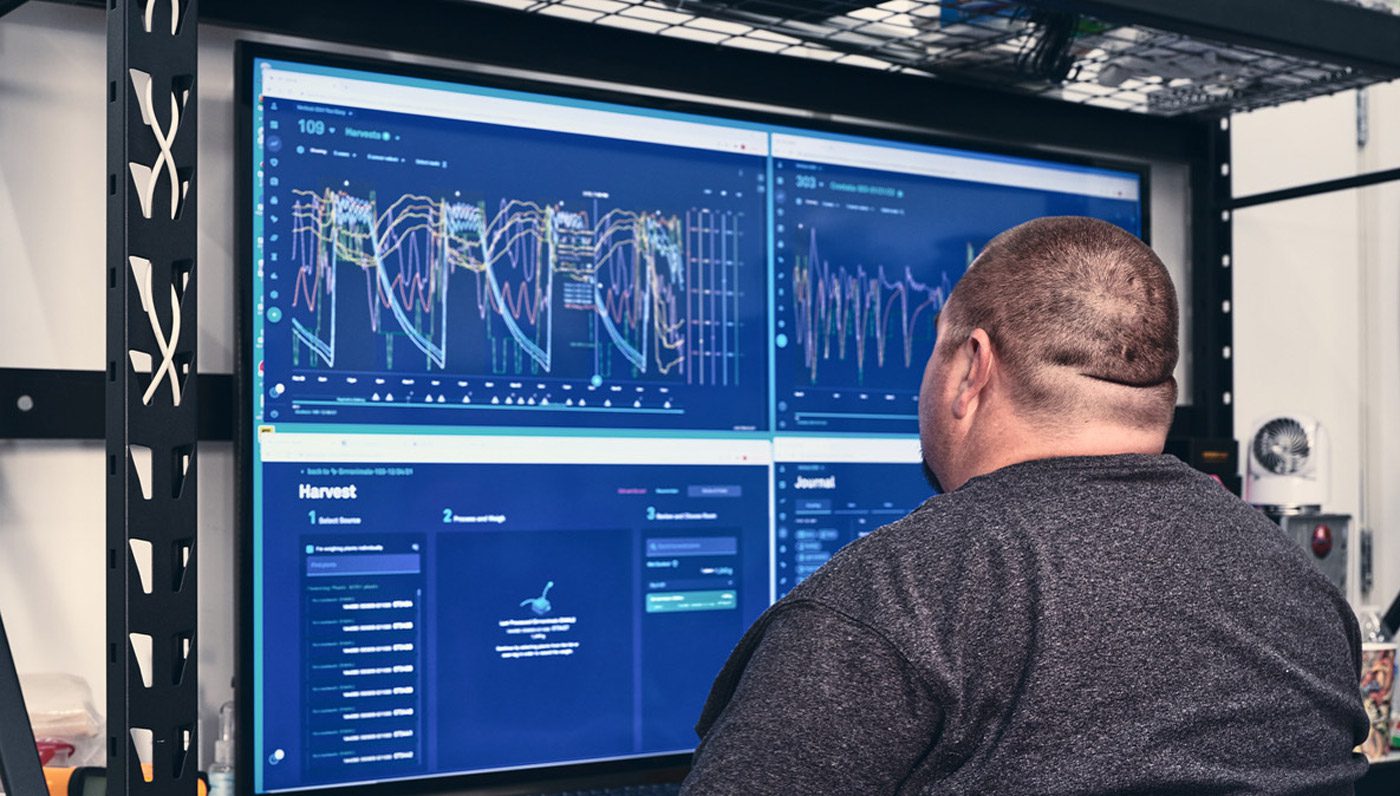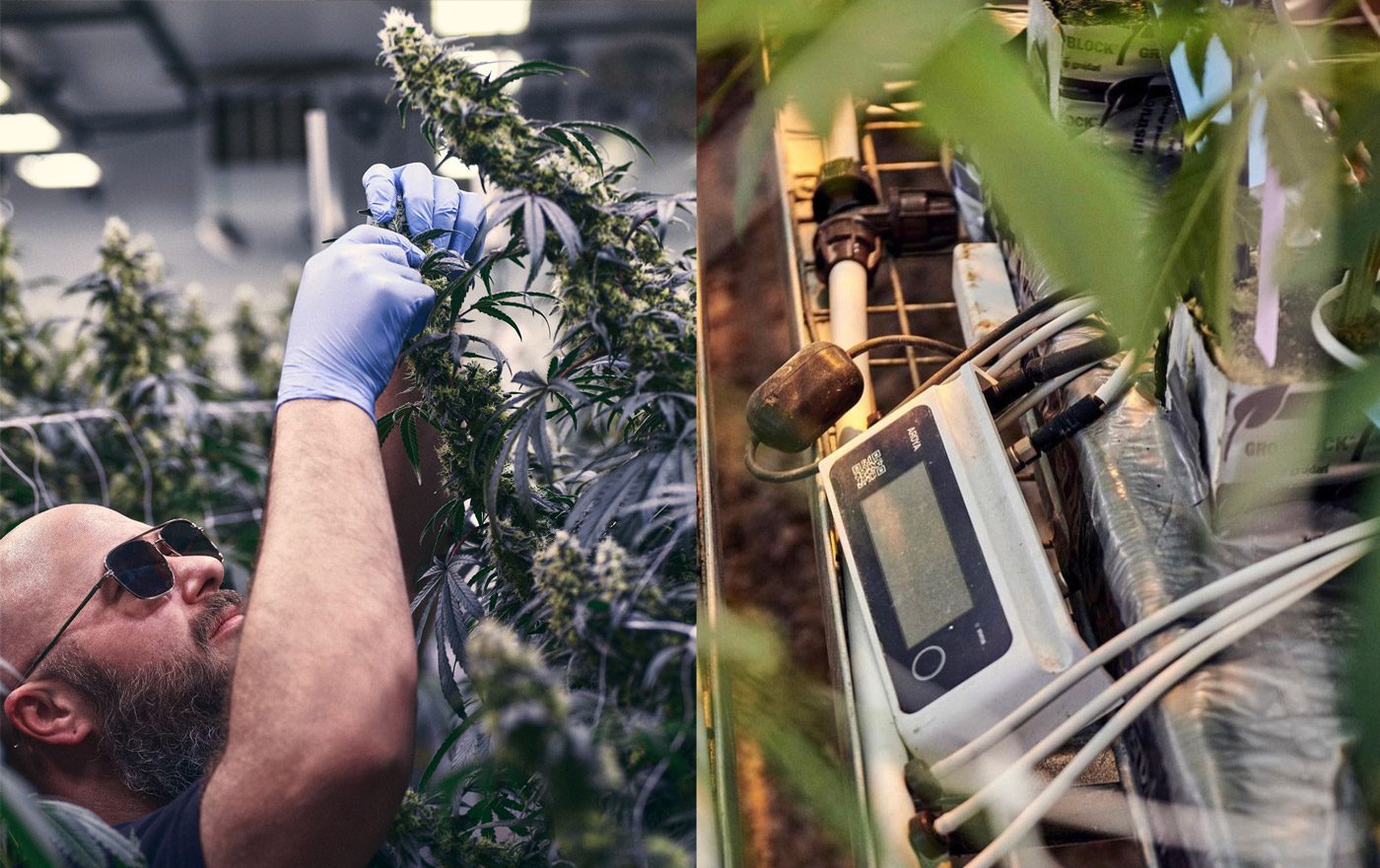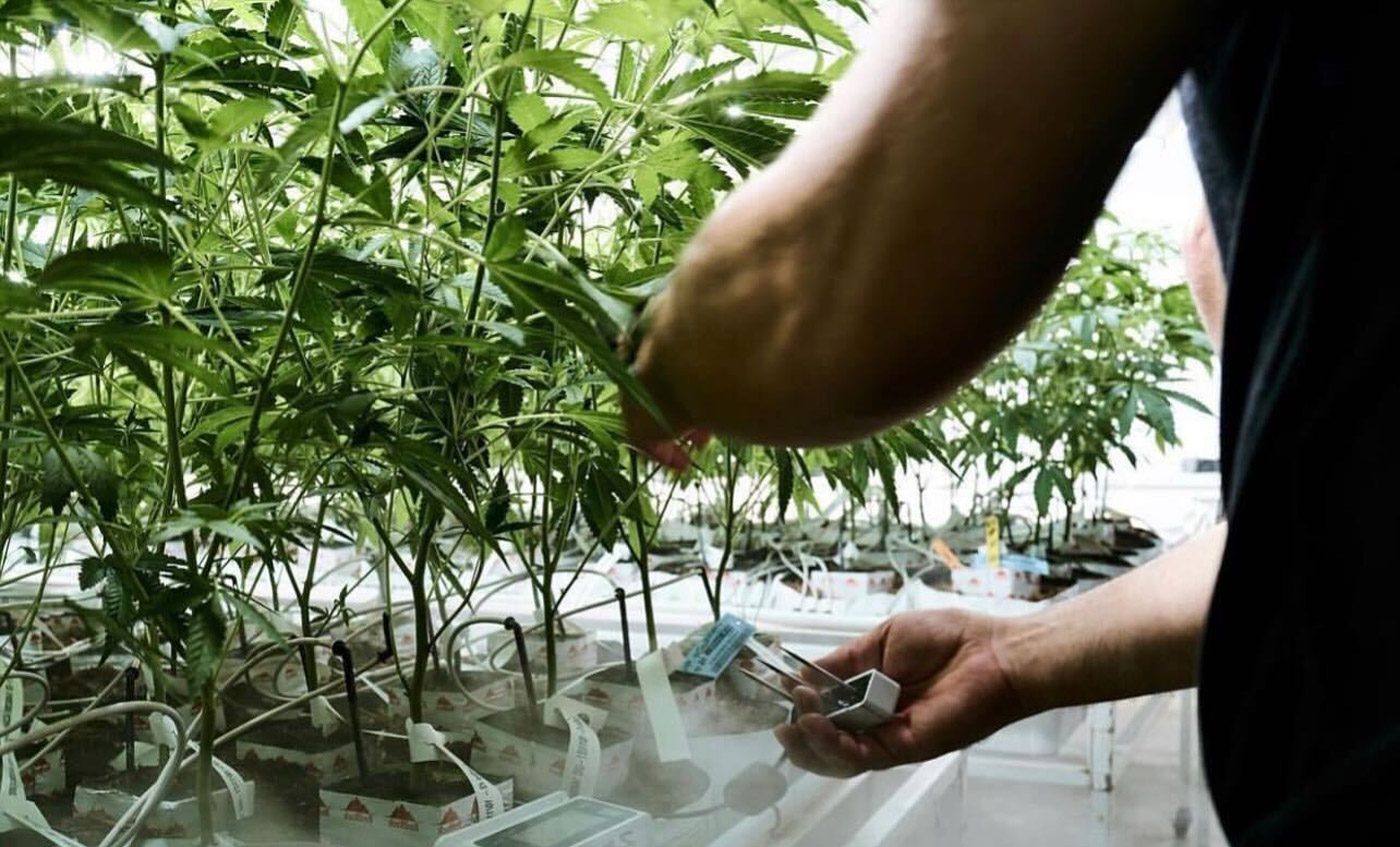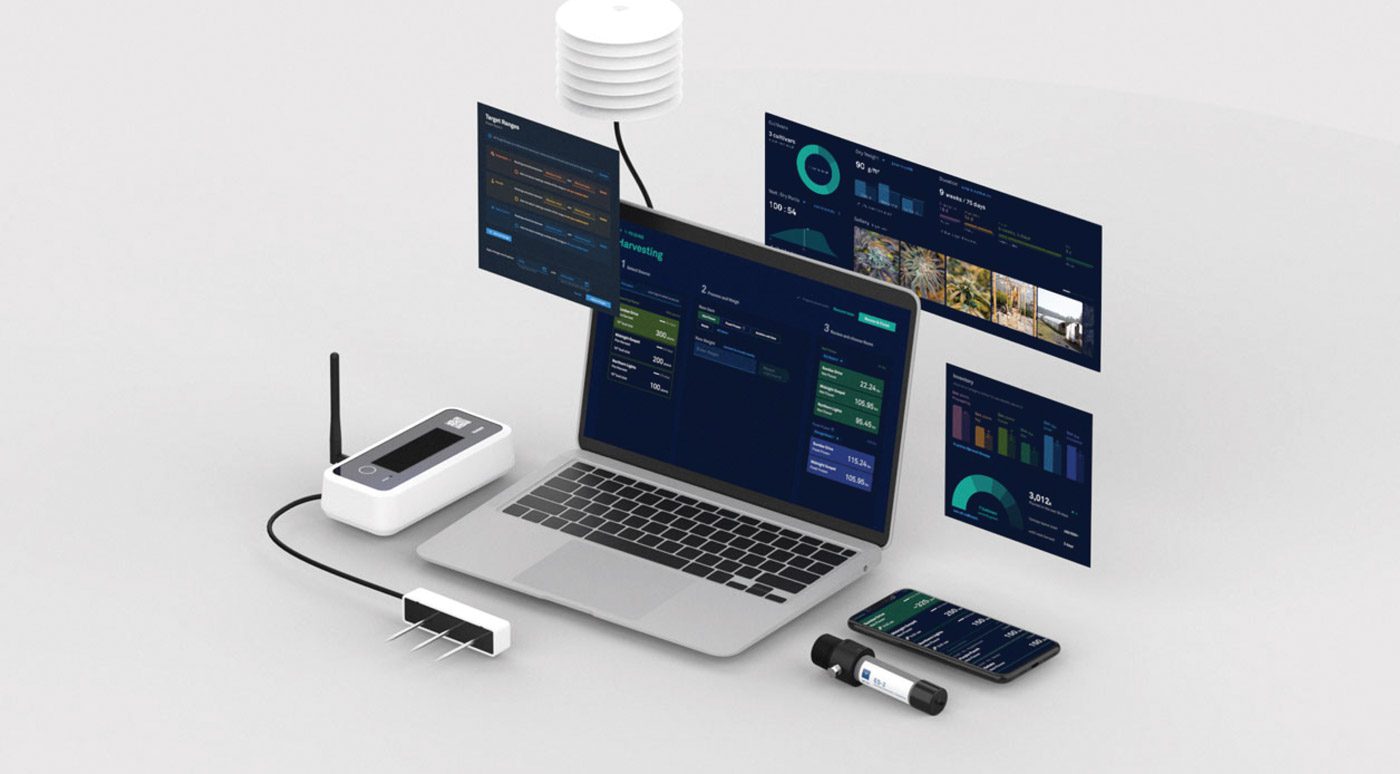Visit any cultivation site and you’re bound to see humming fans, frosty buds, and a battery of whiteboards. These carryovers from the underground days, along with notebooks and spreadsheets, have long been the go-to tools for growers. For good reason: They’re accessible and easy to implement and allow growers to track things clandestinely by being easy to erase, secure, and easy to tuck away.
Since the predawn of the legal market, the whiteboard has endured as the all-knowing hub for company news, staff scheduling, facility tasks, and chore assignments. This is hardly surprising in an industry that lovingly embraces the old-school.
That said, this ain’t your 20th century med market anymore. The modern industry ecosystem is now highly regulated, wildly competitive, requires ongoing compliance, and lacks centralized standards. Imagine the volume of vital information that falls through the cracks when the dry-erase is accidentally wiped clean, the former head grower takes their notes to their next job, or when everyone misses a key spreadsheet error. Common mistakes, deletions, and data silos cost dearly in yield, quality, profit, and productivity.

Data is the Most Important Nutrient
When it comes to maintaining an optimal indoor or greenhouse environment for plants to flourish, cultivators must balance being highly consistent and adaptable to fulfill ever-changing consumer preferences and potency demands. For commercial growers, gaining visibility into the real cultivation data — versus the scribbled notes an unverified source wrote in a battered notebook six years ago — can deliver the intelligence they need to grow more and better cannabis at scale.
“It’s very difficult to get data and have it be correct,” says Scott Campbell, president and CEO of Meter Group. “But it serves as a benchmark, internally and externally, within the industry, that everybody can measure themselves against to actually improve.”
For Campbell, whose company has been manufacturing air and water quality, food safety, and crop management sensors and solutions for over three decades, the importance of data simply can’t be overstated.
“We have inputs, outputs, and outcomes,” he explains. “If we don’t have the data for those inputs correctly, and if we’re not correctly measuring outcomes, then we can’t improve over time. That’s why I’m so passionate about data — it’s that link between the promise that we see in academia, with the practice that we see in industrial production. Data brings those two together.”
For example, let’s say you come in one morning to find the plants in one of your rooms wilting. That sparks an investigation: What’s going on in the medium with water content, electrical conductivity, and drybacks? Tracking and monitoring the plants daily can offer these — and other — important insights, giving cultivators the cues to address their plants’ needs in real time, preventing more thorough (and costly!) interventions in the future.
Suppose one of your cultivars suddenly becomes a customer favorite and sells out. You hope to fulfill demand by boosting production, but what steps do you need to take to increase yields next harvest? Historical data on what did and didn’t work in the past — with irrigation, light, climate, and more — becomes a launching pad for making the necessary improvements that can get those yields closer to where they need to be, and then some.
Getting into the habit of checking the data behind both the day-to-day and the past offers cultivators something that can be pretty hard to come by in the realm of commercial cannabis: control.
Three Roads to Better Yields Through Data
Federal prohibition, high taxes, multiple regulatory frameworks — these factors alone greatly inhibit a company’s ability to scale, but digging into the data creates possibilities. When growers harness it to make production improvements that lead to better yields, the cultivation process (not to mention the company) benefits as a whole. Growers who apply data in three key areas will see the greatest benefit. These yield-accelerating metrics include increasing light intensity, crop steering based on where you’re at in the grow cycle, and not over-drying in the post-harvest phase.
“At each phase of growth for the plant, there’s going to be something that limits the success of the grower. In veg, it’s certainly not going to be light intensity,” Campbell says. “Veg is about keeping the plant happy, keeping the roots happy, and having vigorous, vegetative growth. But once you get into flower, the cannabis plant loves light so much that we typically see people running maybe 600 or 700 PPFD (photosynthetic photon flux density). The cannabis plant can take way more than that — up to 1500 PPFD, as long as you’re enriching with CO2 — and a lot of people are undershooting that.”
The second key area of data-driven opportunity is through crop steering: a plant growth management practice in which growers manipulate light, climate, and irrigation to encourage plants to grow a certain way. And as Campbell explains, intention is key.
“Every day that you make decisions about what you’re going to do with your plant — what you’re doing with your atmosphere and your irrigation strategy — you’re crop steering,” he says. “Now you might not be giving the plant the right cues for where it is in its growth cycle. You might be sending the plant vegetative cues with your climate, and generative cues with your irrigation strategy, and that’s also counterproductive. So that’s the first thing: being aware of the cues that you want to send the plant.”
Using data to inform crop steering techniques can help cultivators look beyond generalities and dial in all the way to the cultivar level — and that’s the goal, according to Campbell. “Number one, control the environment. Number two, be intentional broadly across all the genetics that you have. Number three, zero in on the perfect conditions at each phase of growth for each cultivar to maximize production each time you take in a new cultivar to nail that recipe as soon as you can. That’s really getting the most potential out of (crop steering),” he says.
The third opportunity comes post-harvest. Using data to keep from over- or under-drying your cannabis can impact everything from shelf appeal and consumer experience to the company’s bottom line.
“Overdrying the plant means you dry off product that you could have sold,” Campbell explains. “You have to be able to target those water activity ranges in terms of what your customers are looking for, set those parameters, and then drive accountability across that whole post-harvest processing chain — so that when you package the product, it’s the right water activity and you’re getting paid for that as well.”
The Future is Now
Growers looking to take advantage of advanced cultivation data, both historical and in real time, have much more than whiteboards at their disposal. Substrate and environment sensors offer far more visibility into what’s going on with the plants than “rules of thumb” or gut instinct (although there will always be a need for legacy knowledge and intuition).
Incorporating hardware into a broader cannabis production platform will go even further toward bringing consistency and scale to any cultivation and for the industry at-large. Campbell’s Aroya, a cannabis production platform developed by Meter Group, combines advanced hardware and software to help commercial cannabis cultivators grow better.
“How many cannabis cultivators right now have a scoreboard where they come in the morning and look at it and say, ‘Are we winning or are we losing?’” Campbell says. “That is what we define as a cannabis production platform: not just the analytics to say this is how we’re performing, but a system that helps continuously improve that number.”
From being able to capture climate and root-zone data to maximize growth, to driving accountability on the post-harvest side so growers can get the most out of your harvest, a cannabis production platform can go a long way toward improving the all-important grams per foot per year. And according to Campbell, experience tells him it’s past time the cannabis industry went all in.
“The legacy of academic research as it relates to crop production in the world has taken us to yields on products —like corn, soybeans, wheat, and rice that feed the world — maybe six, seven, eight times higher today than they were back in the 1930s,” he says. “Things like herbicides, pesticides, fertilizers, mechanized farming, much better genetics, have been achieved through a combination of academic research and then applying those learnings into actual agriculture production. The same thing is going to happen to cannabis. That’s the promise and also the excitement around this industry.”
The road into the black doesn’t go through whiteboards anymore. When it comes to modernization, standardization, and optimization, data is the way forward. By applying it holistically and with precision, cultivators and operators across the country can ensure quality product and consistent SOPs at every turn.
Kaisha-Dyan McMillan is a writer and journalist specializing in the cannabis industry. She is based in the Bay Area and has been a copywriter with Aroya since 2021.





